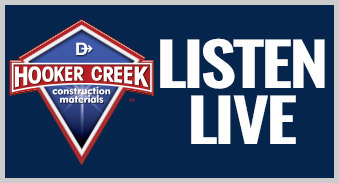BEND, OR -- The Oregon Department of Education says schools are getting more students to graduate, but they have a long way to go. In 2016, 74.8% of Oregon students earned a high school diploma in four years; that’s a 1% increase from the year before and keeps the state near the lowest in the country. Students considered "Underserved" saw more improvement than the average. African American students had a nearly 4% gain, while Latinos saw an increase of about 2%.
Bend-La Pine Schools Deputy Superintendent Jay Mathisen says it’s easy to get frustrated with Oregon’s continued low standing in national rankings. However, he says graduation requirements aren’t the same in every state. "A number of other states, they don’t require near what Oregon does to get a diploma. So, we’re comparing apples and tractors when we say that Oregon is the 47th or 48th in the country. In Florida, for instance, any student in the last three years of high school, can be taken off a 24-credit diploma and put on an 18-credit diploma, where they have significantly less mathematics required, English required, science required. That comes out to more than a full year of high school less than what the Bend academic diploma requires."
Mathisen's district continues to outpace the statewide rate; but, after showing no improvement from 2014 to 2015, the 2016 rate grew by just 3-tenths of a percent. Mathisen says the district is still pleased with its 77.5% rate. "This is our second highest graduation rate ever as a district, and that’s a good thing for us. To receive a Bend-La Pine academic diploma requires two more credits, so that’s four more semester classes than what most high schools in the state require. So, the vast majority of the kids getting diplomas in June, walking across the stage and doing that at our comprehensive high schools, have essentially taken more than a half of a term more of high school." Mathisen acknowledges there’s room for improvement but says it’s not realistic to expect a 100% rate because some students, like those with special needs, aren’t able to earn a diploma in four years. And, he notes that several alternative programs, like the J Bar J Learning Center and National Guard Youth Challenge (OYCP) are also included in the district stats. "Students who go to those programs, because they’re within Bend-La Pine, physically – their campuses are - they’re our students in terms of state numbers. So, as we dig through those numbers, we know that we’ve got numbers of students who don’t attend any of our high schools, but they get counted in our data."




